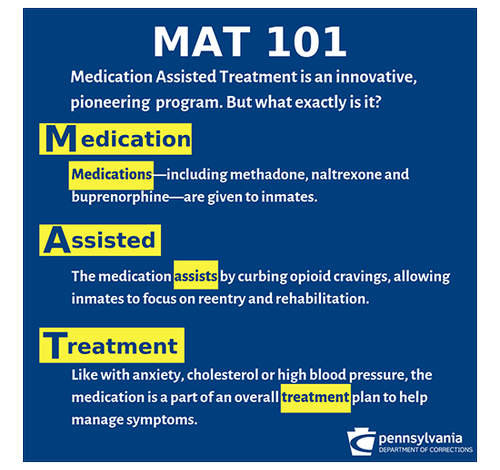Advantages of Medication-Assisted Treatment for Opioid Addiction

The fight against opioid addiction is the same for not only the individuals but also for their healthcare providers during rehabilitation. A holistic approach to drug addiction is that the medications are used in conjunction with counseling sessions and behavioral therapy. This provides a humane and efficient way of dealing with drug addiction. This particular article aims at analyzing the benefits provided by these therapies and offers advices on using them, to improve the outcome of the patients who seek to overcome their opioid dependency.
Sustained Recovery Rates
MAT significantly enhances the likelihood of sustaining long-term recovery from opioid addiction. Drugs like methadone, buprenorphine, and naltrexone, which are frequently used in medication assisted treatment (MAT), are essential for restoring normalcy to body functioning, lowering cravings, and stabilizing brain chemistry without producing the euphoric effects of opioids.
One of the most prominent benefits of MAT is that it can reduce the level of cravings and induce a quitter attitude to the user such that one can continue their normal daily activities and concentrate on the course of recovery with no interference from withdrawal. This type of support is extremely helpful to patients coping with both the psychological and physical barriers to recovery and a settling on sustained, narcotics-free lives.
Minimizing the risks of relapse
MAT is known to be capable of reducing the risk of relapse that stands to follow. The medications that are employed in MAT treatment such as methadone, buprenorphine and naltrexone are aimed at effectively countering withdrawal symptoms and cravings that cause relapse, the major lapse in recovery. In hours of crisis drug this medical support plaies particularly important role and if recovered persons have an entrance to the drug during the early stages of recovery it decreases the risks of dangerous overdoses.
As a safeguard against the frequently unending cycle of relapse and recovery that many people battling addiction go through, MAT offers a steady route out of opioid dependency. Patients’ chances of long-term success are much increased when they receive this continuous assistance, which also helps them stay committed to their rehabilitation.
Improved Patient Survival
Implementing MAT in the treatment protocol for opioid addiction has been shown to improve patient survival rates significantly. This approach effectively addresses both the physical and psychological aspects of addiction, thereby enhancing the overall efficacy of the treatment. MAT creates a comprehensive care approach by combining FDA-approved drugs with behavioral and counseling therapy.Such an overall approach plays the part of survival of a patient well, but it is much more than that, as it is very strong in the area of empowering a person towards reclaiming his or her life. Men do this to enslave women and women try to find ways to express their desire, oppose dominant masculine thinking and fight for the space to escape this gender oppression.Better Access to Comprehensive Health Services
MAT programs are frequently integrated within community settings, enhancing accessibility to a comprehensive array of health services.Those who are under the MAT drug treatment aren’t only those who receive the medications but also those who are given access to behavioral offices, improved educational services, and support services. Through not only such integrated treatment rather, but also the provision of the comprehensive care that covers all the areas that are affected by addiction and recovery, patients are assured that their recovery path is clear.
Through placement of programs within communities, MAT programs participating in this idea address the lapse in care stratum and also create a social support system that is very essential for long-term recovery success. A person-centered model of healthcare concentrates on the immediate and lasting problems that come with people fighting with addiction in addition to providing them with the necessary tools and support needed to heal and change the future.Decreased Criminal Activity
Studies have demonstrated that MAT can significantly lead to a reduction in criminal activity among individuals with substance use disorders. By stabilizing the patient’s condition and effectively reducing drug-related behaviors, MAT programs contribute to lower rates of criminal activity, which are often directly linked to drug procurement and usage. This positive effect not only benefits the individual by breaking the cycle of addiction and crime but also has broader positive impacts on public safety and community wellness.
Through these programs, communities see a decrease in drug-related crimes, enhancing the overall quality of life and safety for all residents.This whole effect boils down the major role of MAT to play as a part of public health strategies providing double benefits for the individuals and community in the process of rehabilitation.
Conclusion
Individuals that battle with drug abuse and opioid addiction may find benefit from a multi-tier approach which incorporates medicine, counseling, and behavioral treatment since it has many advantages. The opioid crisis here, takes a center stage in promoting general peace and psycho-social sustainability, which is necessary in enhancing the rehabilitation possibility.This strategy successfully navigates the challenges of addiction by combining multiple therapy modalities. Investigating this all-encompassing strategy could greatly enhance the healing process for anyone battling opioid addiction and create the foundation for a healthier future.





